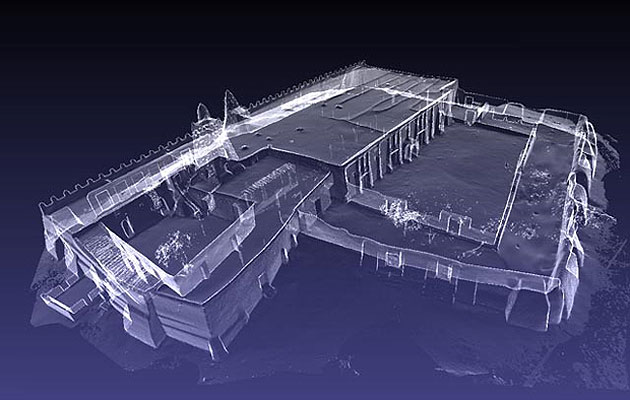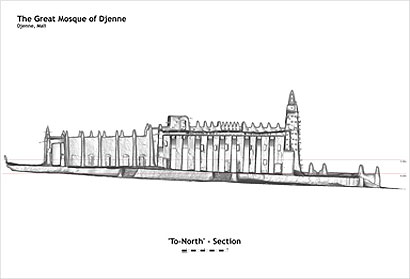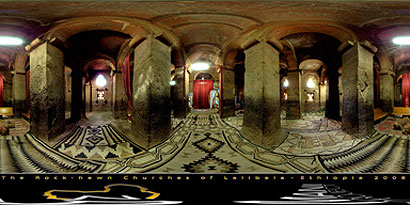|
3D model of the Djingereyber Mosque in Timbuktu, Mali |
||
|
Africa’s neglected architectural heritage is being recorded in striking 3D images by the Zamani project. The project, run by the University of Cape Town, uses high-tech laser scans, photography and conventional surveying to meticulously record database of African heritage sites and landscapes. The aim is to build an exhaustive database of spatial data from 50 important structures in Ghana, Mali, Kenya, Ethiopia, Tanzania and South Africa. “I don’t have any means of conserving them technically but I thought at least a digital preservation would be useful,” says professor Heinz Ruther of the University of Cape Town, who for the past five years has led a team across the African continent documenting sites including Axum and Lalibela in Ethiopia and the Great Mosque of Djenné in Mali. The project creates 3D models, panoramas and sections and elevations of all the sites it visits. So far the group’s endeavours to collect data have encountered plenty of obstacles: they have had to travel to remote locations with their hefty equipment on camel-back and have had difficulty acquiring permits. In one instance they where even threatened with imprisonment and stoning. “People don’t believe that we are doing this for no profit,” explains Ruther. “We are not archaeologists,” says Ruther, who is a professor in geodesy, a discipline focused on measuring the earth. Instead, the result of the project is an interactive model, in which contextual data is closely linked to spatial data. The aim is to create a user-friendly adaptable interface where all components of their work is connected and easily navigated, so that you can experience the spaces of these sites virtually. Such innovative laser scanning is used to create high-resolution images that the group is waiting for computer technology to catch up so it can put together this interactive platform. “Most people see the 3D models as the most important part of the project,” says Ruther. “I see it as a combination of everything.” The group wishes to create a permanent record for future generations and help the conservation and restoration of significant sites. But it’s their vision of an interactive function that sets them apart from traditional conservation projects and promises applications across various design disciplines.
Section of the The Great Mosque in Djenne, Mali
Panorama Churches of Lalibela, Ethopia You can see the work on the Zamani project on www.zamaniproject.org. |
Words Natasha Lyons |
|
|
||




















